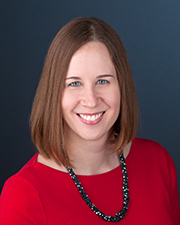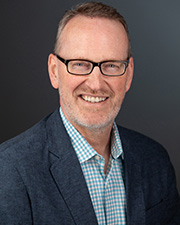KU leading program to bring teachers into research labs, design education to draw diverse scholars to engineering
LAWRENCE — Improved recruitment of women, racial and ethnic minorities to engineering and the sciences has long been a goal in the field. Now, a multidisciplinary team of education and engineering researchers at the University of Kansas will work with middle school teachers to encourage potential scholars at a younger age.
KU has secured a three-year, $586,645 grant from the National Science Foundation to establish the Research Experience for Teachers: IDEA-BioE. The project will pair six middle school math and science teachers from the Topeka Public Schools and six pre-service science teachers from KU’s STEMTeach program with researchers in the School of Engineering. In addition to learning from the latest in bioengineering and engineering design research, the teachers will develop education modules that expose students to the science and include psychological aspects that research has shown to attract individuals to a career field. The work will include educational interventions that address gender stereotyping, self-efficacy and relevant occupational values that often stand in the way of women and minority scholars from joining or remaining in the profession.

Prajnaparamita Dhar, professor of chemical & petroleum engineering, is principal investigator of the project and will partner with Meagan Patterson, co-PI and professor of educational psychology, and Douglas Huffman, professor of curriculum & teaching.
Dhar said she’s long wanted to help improve diversity in the engineering field but was especially moved to do so in 2020 after experiencing the isolation of the pandemic and witnessing the year’s protests and reckoning with racial justice.
“I wanted to do something, and clearly in education, we can make a difference. We have very low representation of people of color and women in our field,” Dhar said. “The very next day after feeling isolated and upset, I saw the NSF had an RET request for proposals for this area. I have worked to present engineering concepts to a broader audience before, but I do not have expertise in educational psychology. So, I reached out to Meagan to initiate a collaboration that would go beyond just showcasing engineering, by integrating the knowledge from educational psychology and STEM curriculum design with research experience in bioengineering labs. The goal was to allow targeted interventions and lesson design that address the barriers often faced in increasing diversity in engineering.”
Patterson specializes in educational psychology, and Huffman specializes in science and engineering education. Together with Dhar, they will help teachers create engineering modules based on their research experiences.

“We know from research that women and people of color often state that they want to help people in their careers, and you absolutely can do that through engineering,” Patterson said. “We’re going to help teachers talk with their students and provide them engaging, hands-on experiences about engineering in ways that show the possibilities there are in bioengineering and engineering design.”
The working and pre-service teachers will be matched with KU researchers working in a variety of bioengineering topics such as aging, women’s health, vaccine stabilization and related areas. The experiences will help teachers explore the intersections between engineering and various fields of sciences and how to share those experiences with students while addressing common stereotypes.
“What is unique here is the integration of psychology, bioengineering, and science and engineering education. We will help build and review the education modules the teachers design to ensure all those components are there and show the possibilities of engineering,” Dhar said.
The first cohort of teachers will arrive on KU campus to join research labs in summer 2022. The partnership with Topeka Public Schools is appropriate, researchers noted, as the district was at the heart of the historic Brown v. Board of Education case that ruled state laws establishing racial segregation in public schools are unconstitutional, even if the segregated schools are otherwise equal in quality. The project will help develop a pipeline of under-represented students to enter the field of engineering. Beginning teachers in the STEMTeach program will take the engineering models they create into their own classrooms and schools they join across the country. Project leaders also hope it can serve as a pilot to guide how to integrate bioengineering into the middle schools.
New knowledge and modules generated through the project will also be shared through publications including engineering education and educational psychology journals. Participants will also disseminate new knowledge through KU’s Virtual Learning Network, which connects pre-service teachers with KU faculty, master teachers in the field, school administrators and educators.

“We have a mix of experienced, first-year teachers, principals and educators of all types collaborating in our Virtual Learning Network,” Huffman said. “We hope to share what people are doing in the classroom and engineering lab. The network is a great place to share resources, ask and answer questions, and help teachers, researchers and students share their experiences.”
While researchers know not every student will pursue a career in engineering, engaging teachers in authentic engineering experiences can help to provide more engineering opportunities to middle school students. Doing so while also addressing common misperceptions, hurdles and biases will potentially help bring new voices to the field while giving students options they might not otherwise consider.
“I am always looking to connect, and I think sometimes we forget to showcase how engineering is a very team-driven field,” Dhar said. “With this program we’ll be able to show the connections you can make and how that can appeal to students from broad cultural and socioeconomic backgrounds and give them a chance to make a difference.”